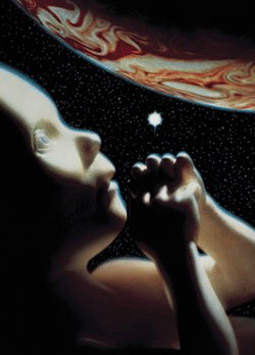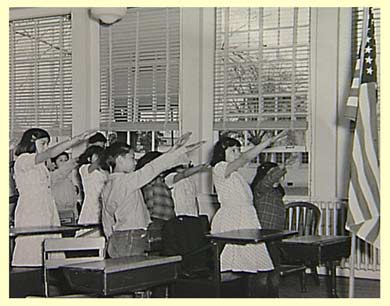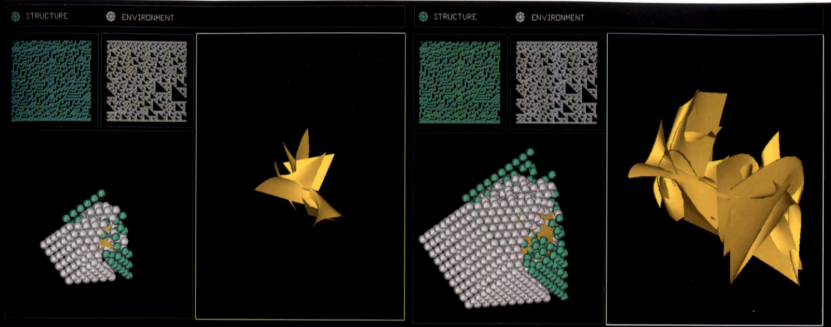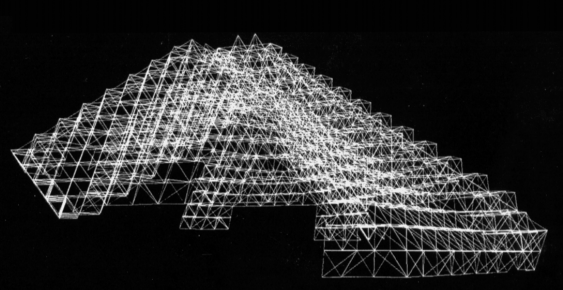Month: September 2012
The Evolution of American Gods
 Taking a break from my countdown, Simon Critchley is back in the New York Times with his fascinating analysis of Mormonism and the varied doctrines concerning reincarnation and the eventual divinity of, well, at least men. Interestingly, reading The Book of Mormon doesn’t illuminate these topics–they exist largely as exegesis through specific lectures by Joseph Smith. As Critchley notes about Smith’s lecture, the character and nature of God is finite, is a member of the Host of Heaven (or a council per the lecture), and creation in Genesis is not creation per se, but is instead some kind of reorganization of an infinite and timeless universe.
Taking a break from my countdown, Simon Critchley is back in the New York Times with his fascinating analysis of Mormonism and the varied doctrines concerning reincarnation and the eventual divinity of, well, at least men. Interestingly, reading The Book of Mormon doesn’t illuminate these topics–they exist largely as exegesis through specific lectures by Joseph Smith. As Critchley notes about Smith’s lecture, the character and nature of God is finite, is a member of the Host of Heaven (or a council per the lecture), and creation in Genesis is not creation per se, but is instead some kind of reorganization of an infinite and timeless universe.
Fascinatingly strange, and compounded in its strangeness by the assertion that:
The mind or the intelligence which man possesses is co-equal [co-eternal] with God himself.
It is an evolutionary assertion that suggests our ultimate being is a divine form, and that we have the capacity to achieve this divinity through action, through works, and through effort at being good. As Critchley concludes:
…I see Joseph Smith’s apostasy as strong poetry, a gloriously presumptive and delusional creation from the same climate as Whitman, if not enjoying quite the same air quality. Perhaps Mormonism is not so far from romanticism after all. To claim that it is simply Christian is to fail to grasp its theological, poetic and political audacity. It is much more than mere Christianity.
While I doubt that this analysis will help assuage the concerns of conservative Christians about Mitt Romney’s faith, it undoubtedly serves as a touchstone for that uniquely American principle of religious freedom, and the underlying assumption (on Constitution Day), that the choice of a leader should not be tied to their choice of romantic delusions.… Read the rest
9
10
11
12
Socialistic Roidrage
 Just when American politics appeared to be getting down to bare-fisted fighting we get a re-affirmation that political ideologies are largely religious from one of the papacy of modern conservatism, George Will, in his inane discovery of socialist tendencies in college football:
Just when American politics appeared to be getting down to bare-fisted fighting we get a re-affirmation that political ideologies are largely religious from one of the papacy of modern conservatism, George Will, in his inane discovery of socialist tendencies in college football:
The collective activity of team sports came after a great collective exertion, the Civil War, and two great social changes, urbanization and industrialization.
…
Progressives saw football as training managers for the modern regulatory state. Ingrassia says that a Yale professor, the social Darwinist William Graham Sumner (who was Camp’s brother-in-law), produced one academic acolyte who thought the “English race” was establishing hegemony because it played the “sturdiest” sports.
Ummm, sure, collectivism is like sports activity and, hell, like war or industry, where people collectively work collectively together towards some outcome. It’s almost like government itself, as one astute reader noted concerning the US Constitution:
“We the People of the United States, in Order to form a more perfect Union, establish Justice, insure domestic Tranquility, provide for the common defense, promote the general Welfare.” Those damned leftists!
Now, we might claim that George Will, confused by ‘roidrage, is just scrambling for material in his strange communist witch hunt, but this has profound implications for reinterpreting American history. For instance, until the Italian Fascists resurrected the old Roman outstretched arm salute that was then picked up as “Heil Hitler” by the Nazis, the Pledge of Allegiance was saluted by school children throughout America in the same way:
And, let’s not forget that Francis Bellamy, the author of the Pledge, was a Christian Socialist advocating the redistribution of wealth for the greater good of the American Christian people.
Will is right about all this sports nonsense.… Read the rest
Evolutionary Art and Architecture
With every great scientific advance there has been a coordinated series of changes in the Zeitgeist. Evolutionary theory has impacted everything from sociology through to literature, but there are some very sophisticated efforts in the arts that deserve more attention.
John Frazer’s Evolutionary Architecture is a great example. Now available as downloadable PDFs since it is out-of-print, Evolutionary Architecture asks the question, without fully answering it (how could it?), about how evolution-like processes can contribute to the design of structures:
And then there is William Latham’s evolutionary art that explores form derived from generative functions dating to 1989:
And the art extends to functional virtual creatures:
Things I don’t remember writing…in 1993
Just as the World Wide Web was beginning there was active experimentation in treating computer communications as an artistic medium. The following was perhaps the last of a small group of absurdists who wrote short stories, person-by-person and paragraph-by-paragraph, built around a central theme. And, interestingly, I don’t recall this one at all:
Recollections of Lady Liberty and the Joy of being an American XVI
“Did you really love her daddy?” My daughter’s scratchy voice squiggles
its way through the telephone line and plants itself in my ear.
“It was the kind of love that wraps itself around your heart and
squeezes like a snake… I know its too much to ask your forgiveness
but I’ll tell you my side of the story if you’ll listen”
“Ok, daddy, I’ll listen”
“Well, meeting your mom was an epiphany for me. At the time, let’s
see… how old are you now?”
“Eight, Daddy!” she giggled. She knew that I knew how old she was.
“Oh yeah, well, it was nine years ago now when I first saw your mom.
It was my first trip to New York, and I’d made a promise to your
grandma to go see the Statue of Liberty. The day was gorgeous,
sparkling, bustling. I had tickets to the 2 o’clock tour, and I showed
up a little early.”
“There were hundreds of people, tourists, milling about. And in the
center of them all was a beautiful young woman dressed in one of those
horrid green park service uniforms. Can you imagine it?!”
“Yes, Daddy! Keep going!”
Now and again, when the coffee boils over and she’s not there to pass
me the squeegee, I do indeed think back to my wife, my child’s
mother…and the great green lady who brought us together. … Read the rest







